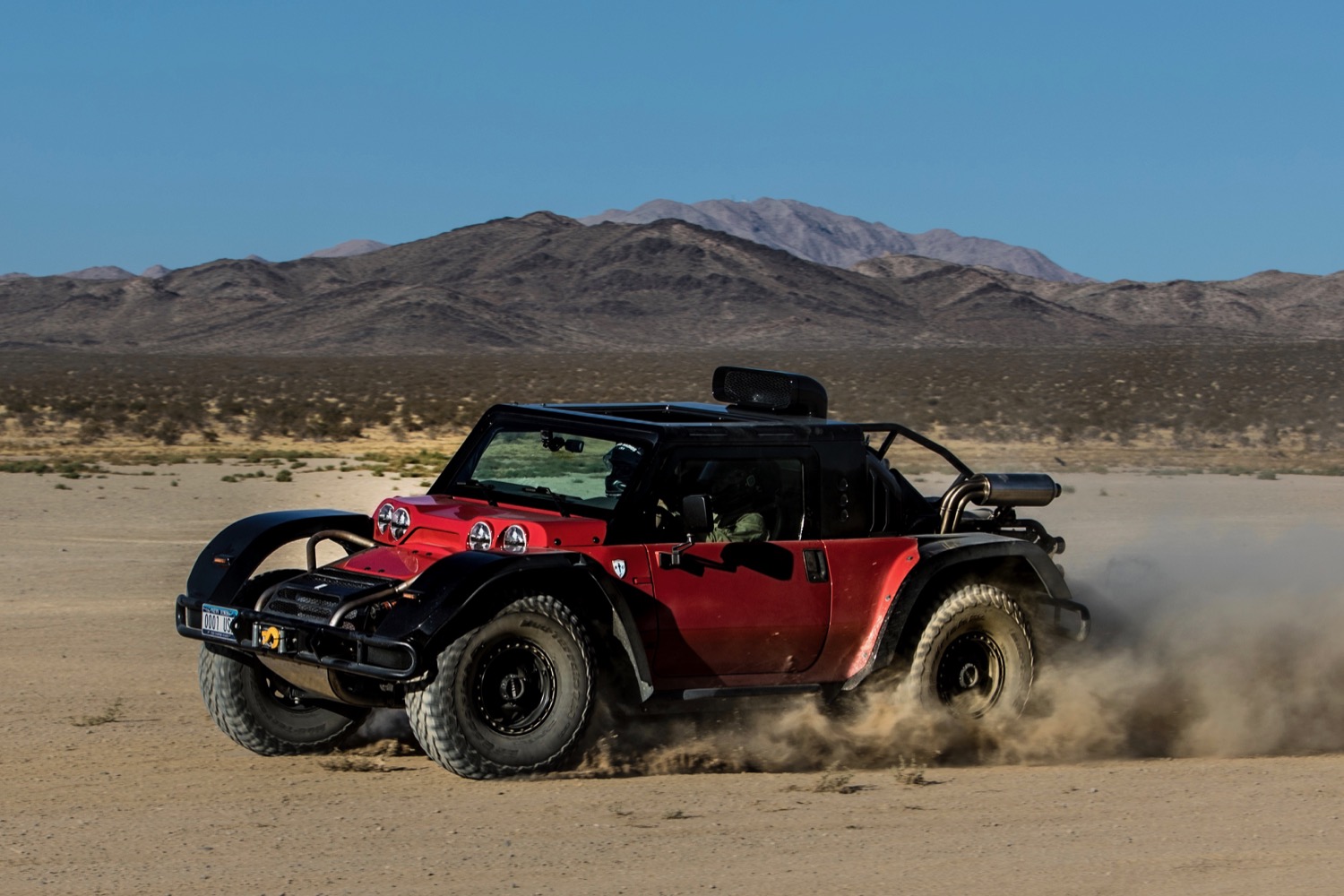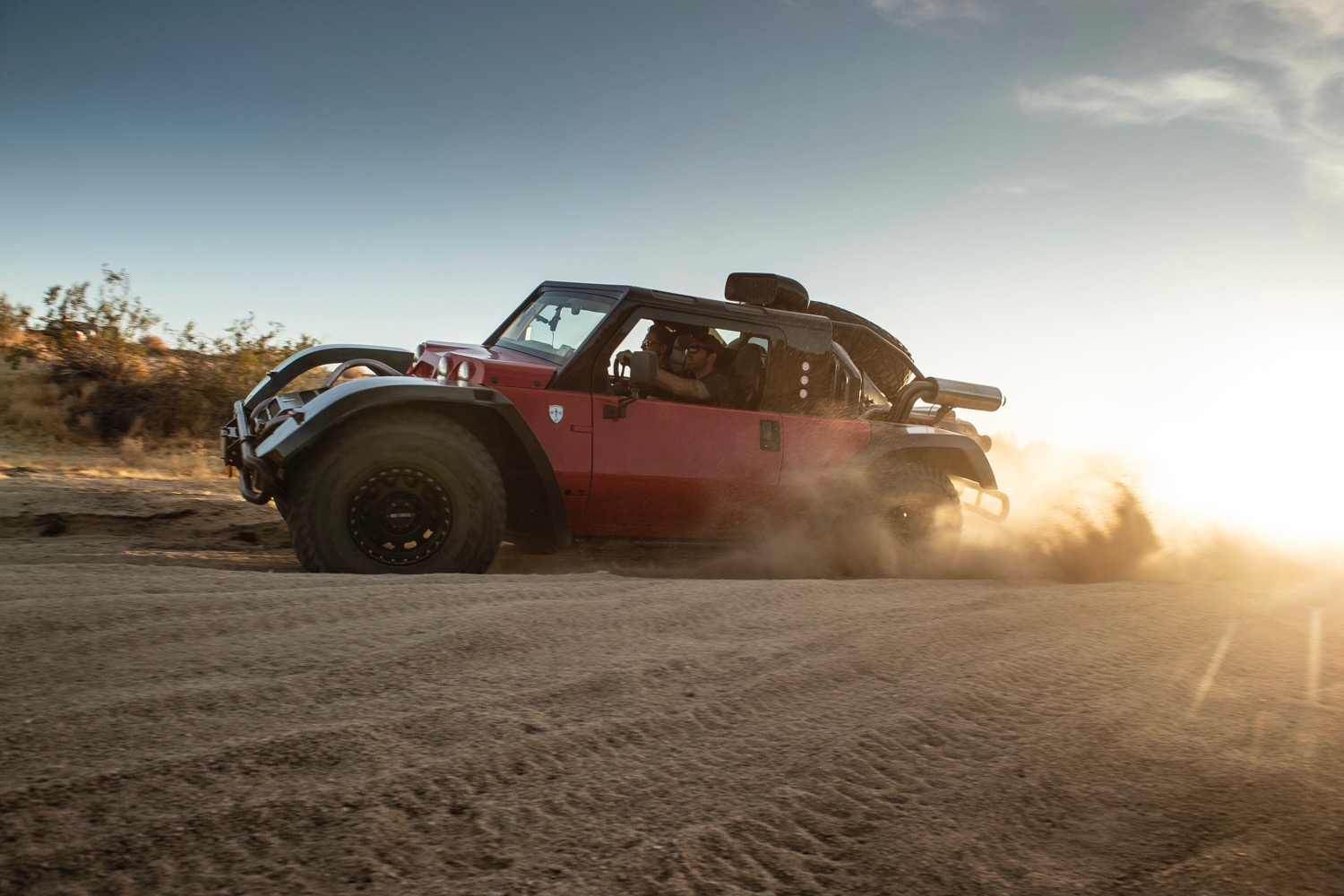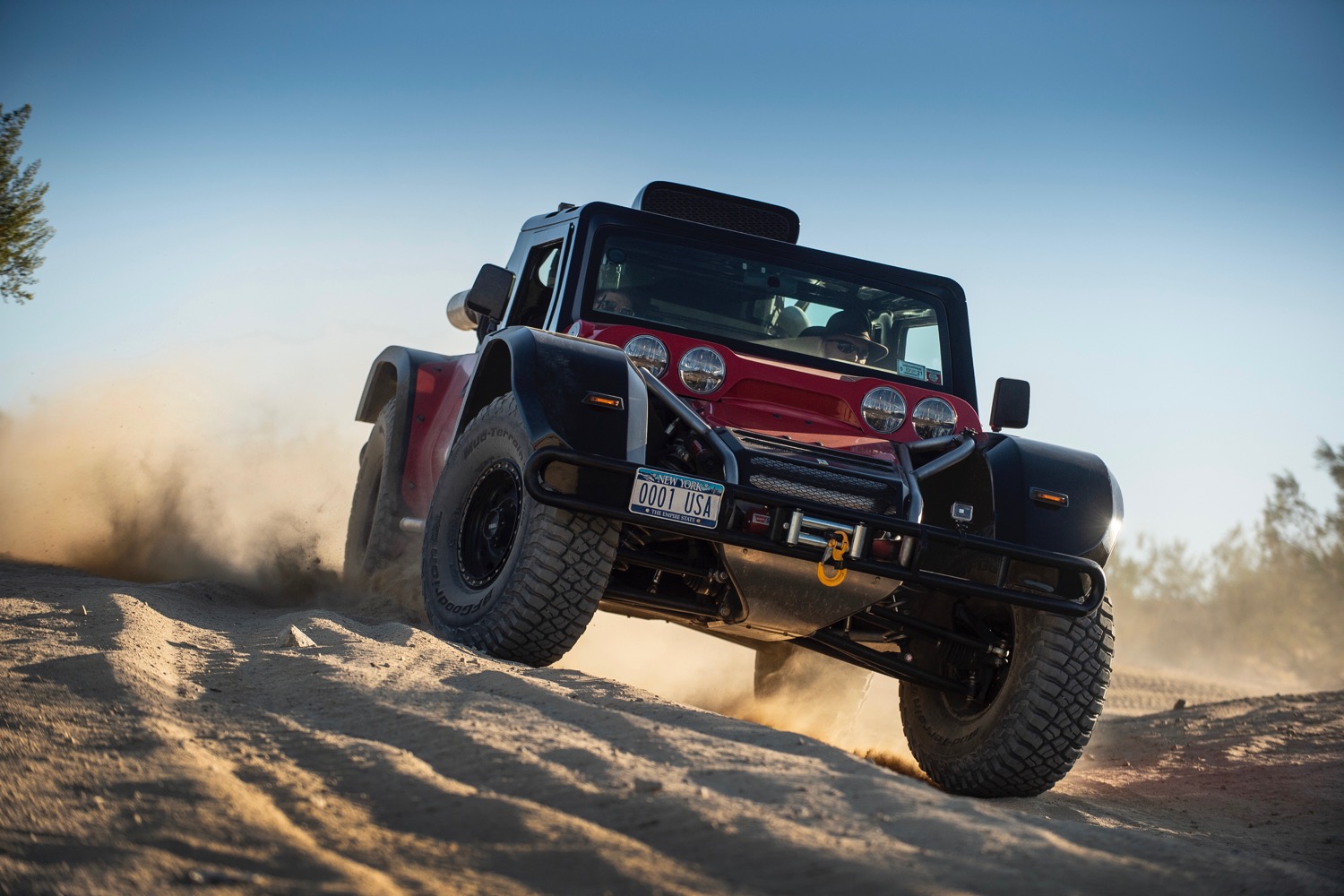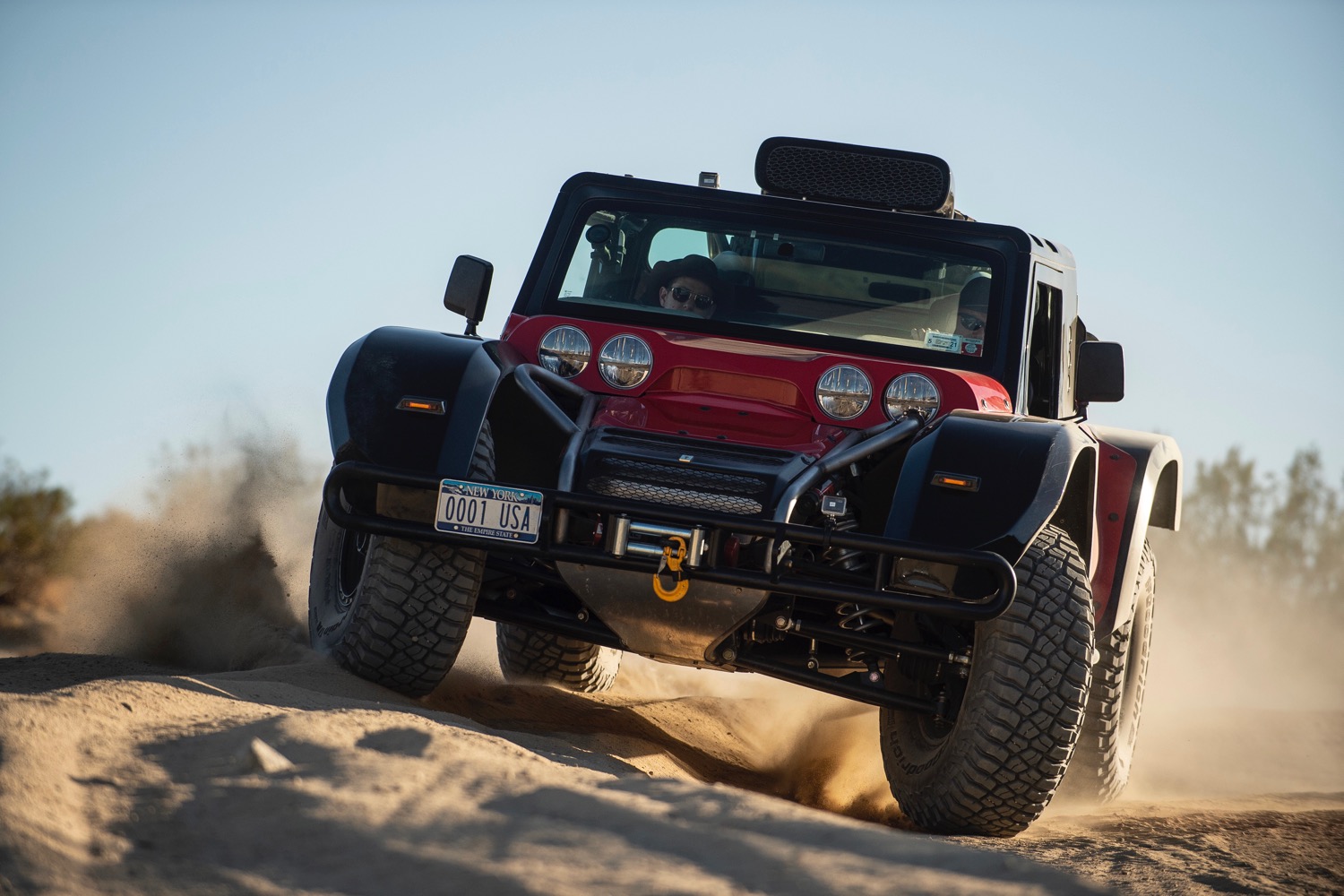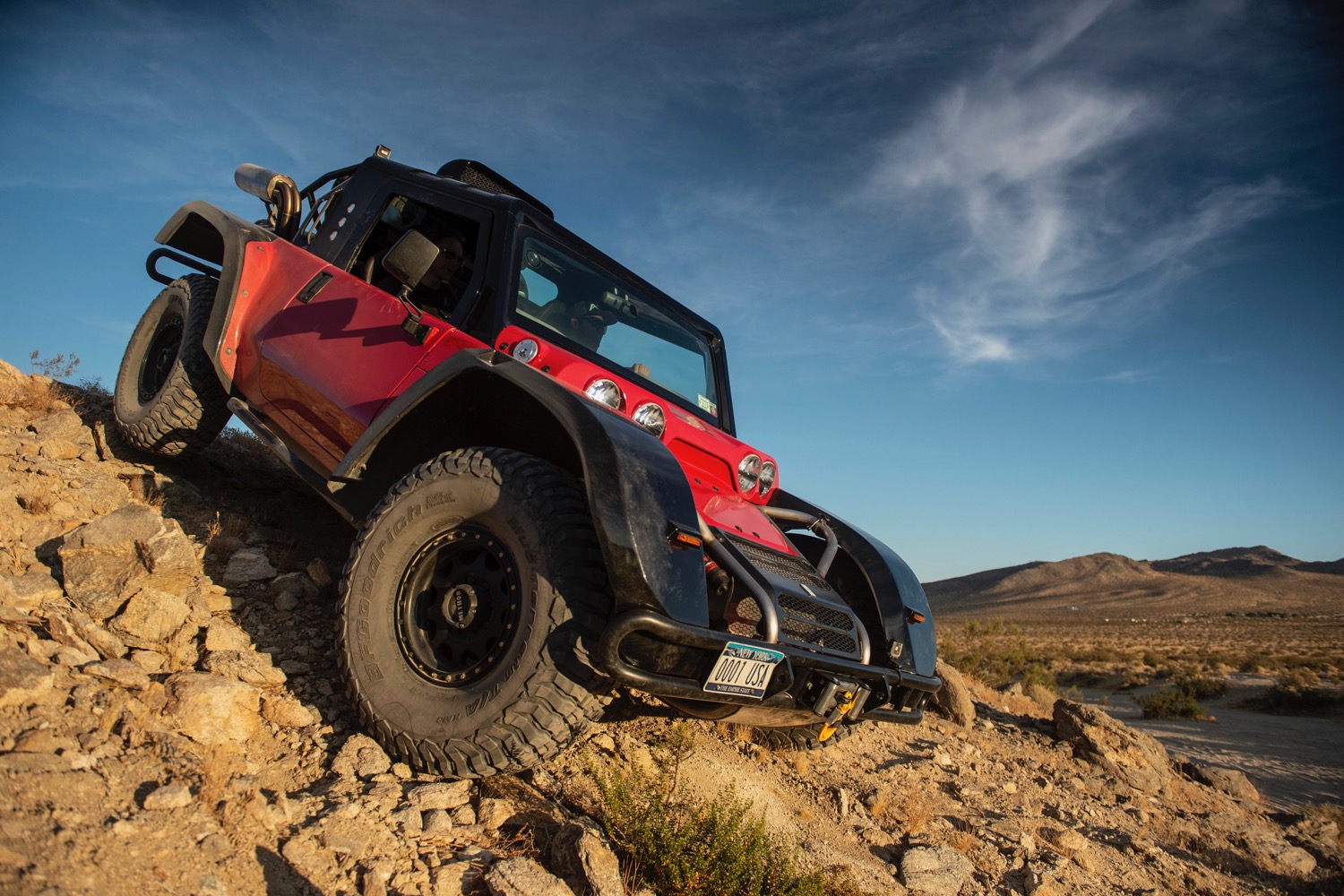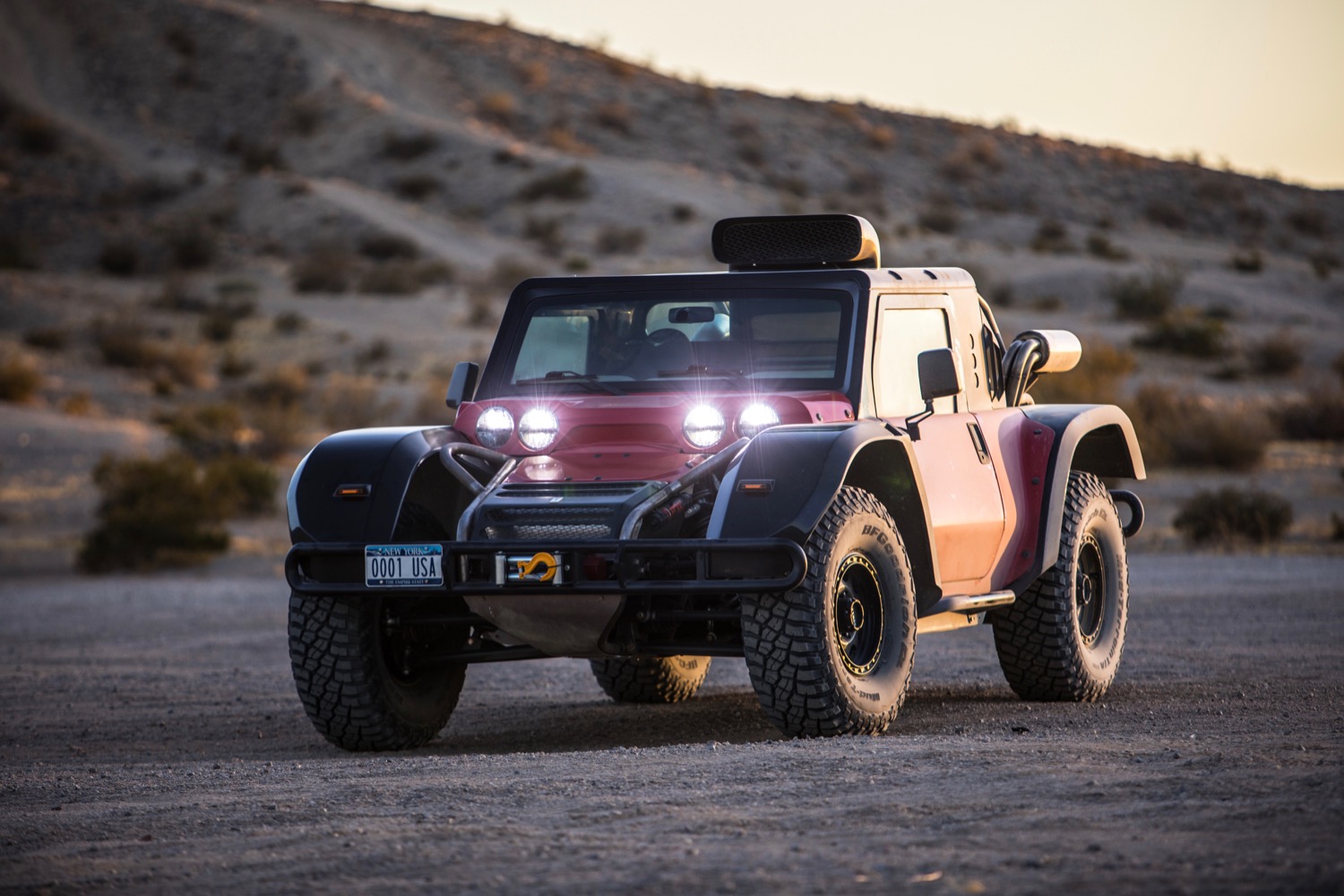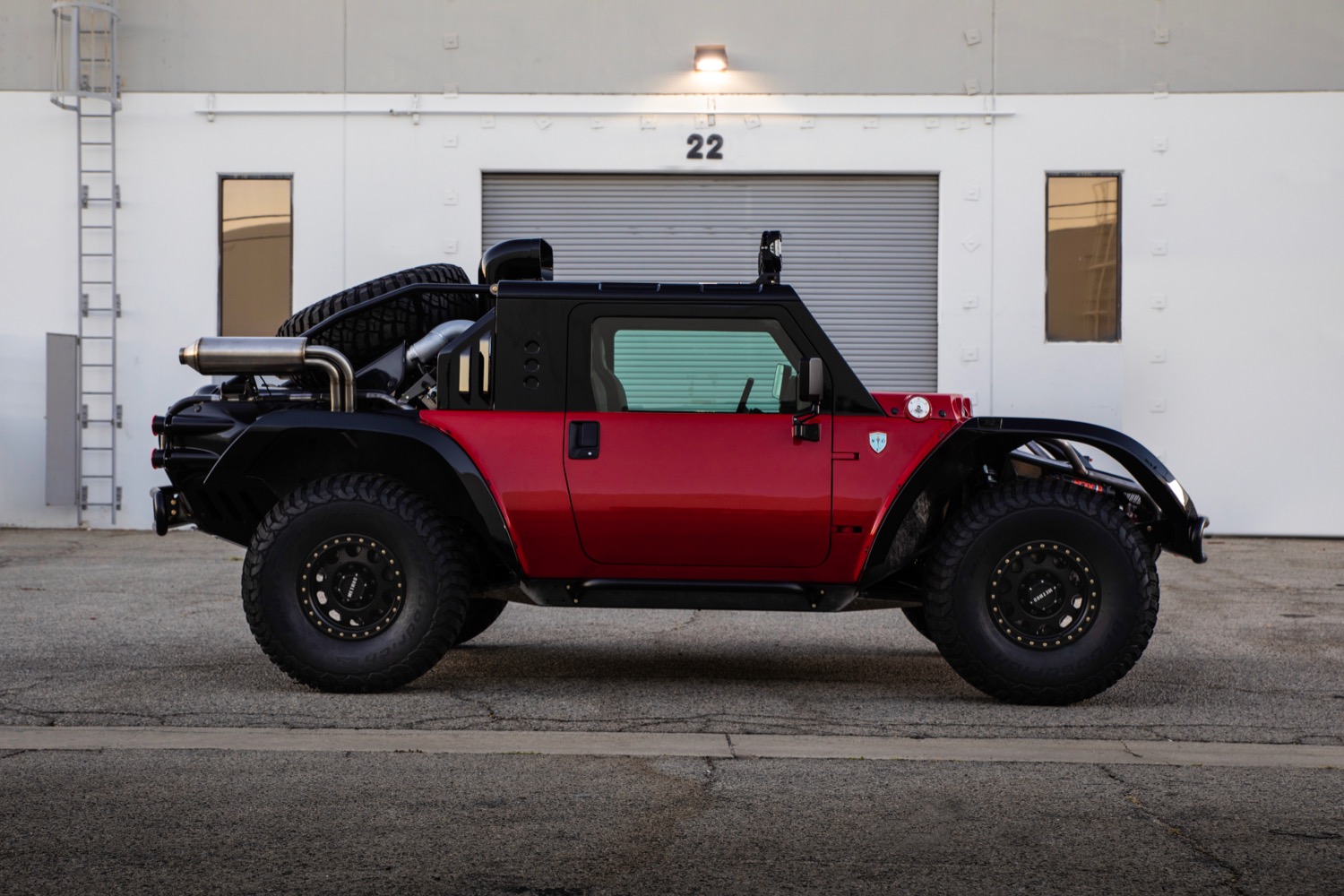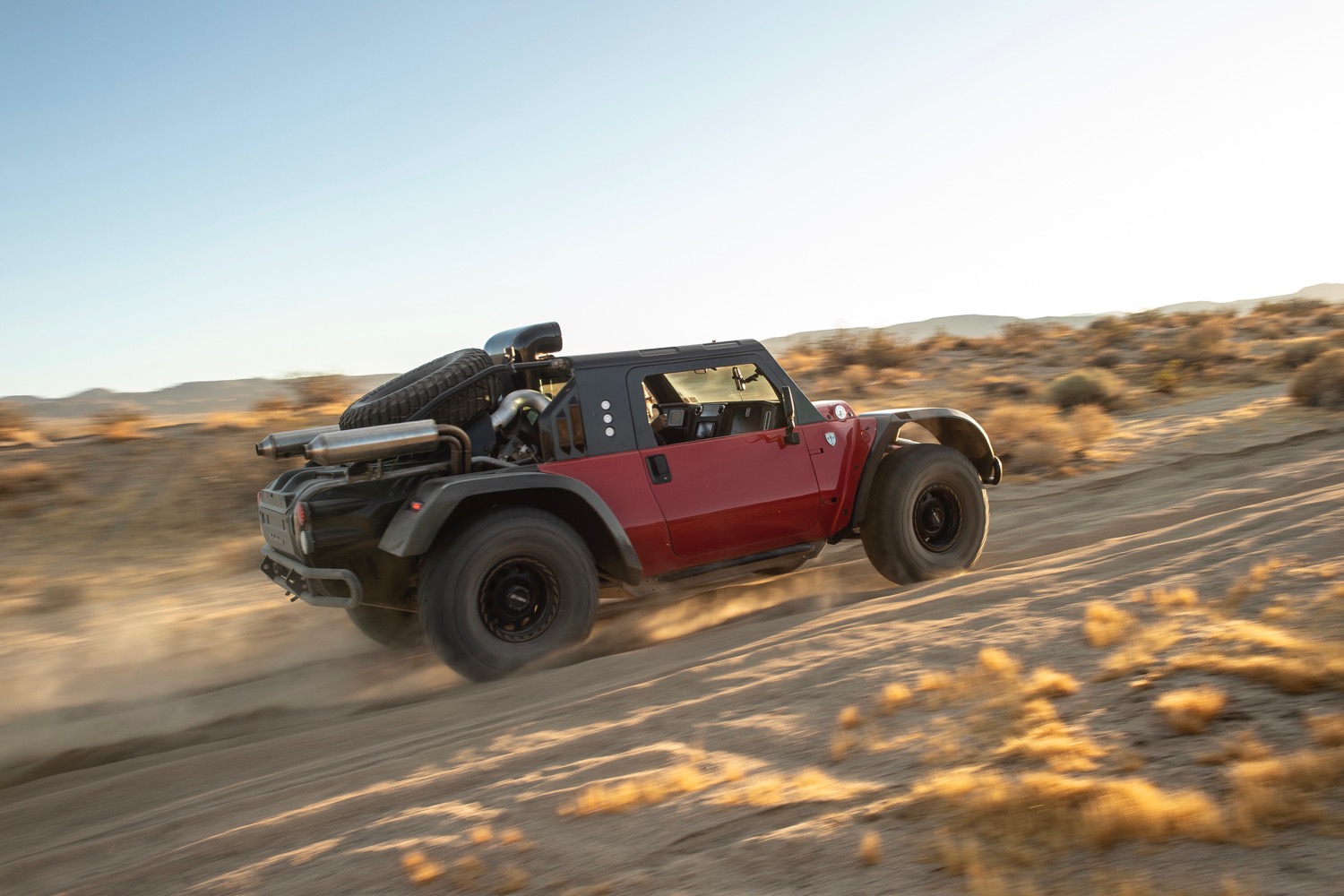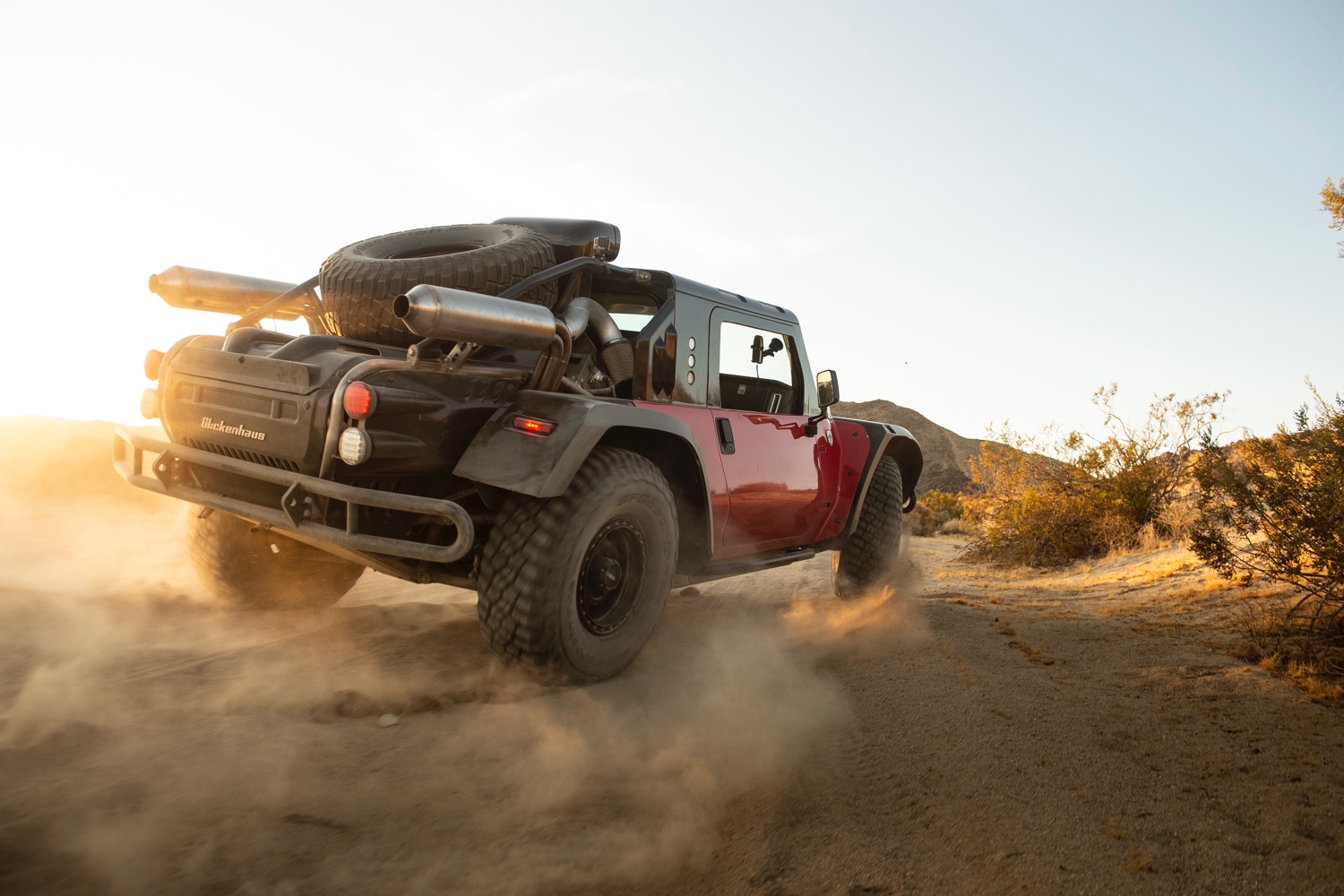Scuderia Cameron Glickenhaus (SCG) has built some impressive supercars, but now the boutique automaker is going in a different direction. Its next vehicle is the Boot, an off-roader inspired by the Baja Boot, a custom-built creation made specifically for the Baja 1000 off-road race in the 1960s. The reincarnated Boot is going into limited production, and should put Jeep Wranglers to shame. It will also return to the Baja 1000 to take on an old nemesis — the Ford Bronco.
The original Boot was built by General Motors engineer Vic Hickey, and was later bought and raced by actor Steve McQueen. Two copies were built; one is in a museum in The Netherlands, the other was bought by SCG founder James Glickenhaus at auction in 2010. The new Boot aims to replicate the no-nonsense design of the original, but with modern updates.
The SCG Boot is available in two-door and four-door configurations, but the two-door version is the only one currently in production. The two-door Boot starts around $258,000, according to Motor Authority. The four-door model costs $287,500. SCG will also offer a “Level 6” armor package, which SCG claims can stand up to fire from M-16 or AK-47 assault rifles, for an additional $166,750.
Buyers can also choose between street-legal and race-only configurations. The racing version gets the 6.2-liter supercharged V8 from a C7-generation Chevrolet Corvette Z06, with 650 horsepower. Street-legal versions get the naturally aspirated 6.2-liter V8 from the base C7 Corvette, rated at 460 hp.
The four-door model also features outboard rear seats, to give those passengers an unobstructed view. Not having to look at the backs of the front seats will also reduce the risk of motion sickness, according to SCG. That’s an important feature, given the conditions these vehicles were designed to drive in.
SCG will race a Boot in the 2019 Baja 1000. It also invited a handful of owners to race their Boots, with full support from its race team. SCG also offered a “luxury tour” to owners who just wanted to spectate. The reincarnated Boot will race against the Ford Bronco, just as the original did in 1969. Unlike SCG, Ford is using a purpose-built racer that shares little with the upcoming Bronco production model. The Bronco took the victory 50 years ago, but will history repeat itself?
The planned 2020 model year production run, consisting of just five two-door models, is already sold out. SCG plans to build 20 of the four-door Boots as 2021 models, with 17 build slots still available. Expect well-heeled off-road enthusiasts to snatch up the rest in due time.
Updated on November 11, 2019: Added photos and confirmation that the Boot will race against the Ford Bronco in the Baja 1000.
Editors' Recommendations
- Ford Bronco breaks down in Baja, and SCG Boot nabs a class win first time out
- For Chevy’s Silverado, off-road racing will be the ultimate torture test

